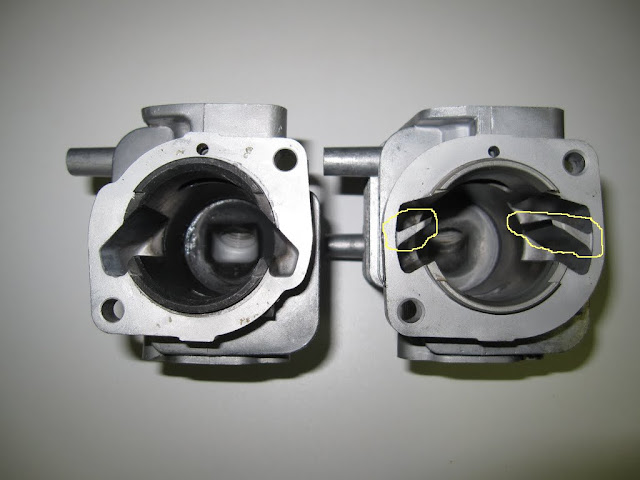Warping
I hope warping won't be an issue, as the thickness of the head below the fins is almost .250". So that's a 2.5" x 2.5" x.25" thick plate being bolted on top of the cylinder. The bolt circle is just outside the cylinder section, so there isn't a lot of cantilever to distort things when I clamp it together with the bolts. I expect cooling to be adequate because the total cooling fin surface area is more than the stock fins I removed.
I still have to work out sealing the head to the cylinder, but my plan is to machine an o-ring groove in the head, and then make an O-ring from copper wire with some "crush" designed into the dimensions. If I get it right, the two aluminum surfaces should seat together with the copper O-ring providing the sealing.
I hope warping won't be an issue, as the thickness of the head below the fins is almost .250". So that's a 2.5" x 2.5" x.25" thick plate being bolted on top of the cylinder. The bolt circle is just outside the cylinder section, so there isn't a lot of cantilever to distort things when I clamp it together with the bolts. I expect cooling to be adequate because the total cooling fin surface area is more than the stock fins I removed.
I still have to work out sealing the head to the cylinder, but my plan is to machine an o-ring groove in the head, and then make an O-ring from copper wire with some "crush" designed into the dimensions. If I get it right, the two aluminum surfaces should seat together with the copper O-ring providing the sealing.





























































 Steve
Steve
 :msp_drool:
:msp_drool:
